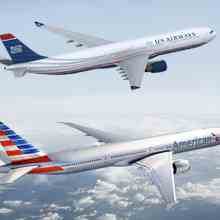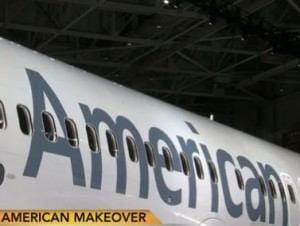What the American Airlines-US Airways Merger Means for You
 After years of speculation and months of negotiation, American Airlines and US Airways announced an $11 billion merger to create the world’s biggest airline. What does this mean for travelers?
After years of speculation and months of negotiation, American Airlines and US Airways announced an $11 billion merger to create the world’s biggest airline. What does this mean for travelers?
The new airline, which will be known as American Airlines and will be headquartered in Fort Worth, Texas, will fly more than 6,700 flights a day to 336 destinations in 56 countries.
In a recent announcement, Parker noted that the airlines currently have no overlap in international routes and only 12 overlapping segments of 900 domestic routes. US Airways fliers will have 130 new cities while American fliers will get access to 62 new cities.
The low overlap in routes is expected to help the airlines avoid antitrust roadblocks. US Airways is much smaller, with just 8 percent of the market, compared to 13 percent with American.
Charlotte, North Carolina, where US Airways is based, will continue to be a hub, although its future role is uncertain. Other hubs will be in Chicago, Dallas-Fort Worth, Los Angeles, Miami, New York, Philadelphia, Washington D.C., and Phoenix.
 The airline will be a part of the oneworld Alliance, with a combined 100 million members in the program. All existing award miles and status will remain the same, but if history is any guide, the merger may diminish availability of reward seats. After all, there’s no point in giving away seats in a frequent-flier program if there are only three airlines. But the programs will stick around, since these companies often make more money from frequent-flier programs than they make from being airlines.
The airline will be a part of the oneworld Alliance, with a combined 100 million members in the program. All existing award miles and status will remain the same, but if history is any guide, the merger may diminish availability of reward seats. After all, there’s no point in giving away seats in a frequent-flier program if there are only three airlines. But the programs will stick around, since these companies often make more money from frequent-flier programs than they make from being airlines.
In terms of airfares, passengers have a right to be concerned. Anytime you shrink capacity and jettison certain routes, airfares have nowhere to go but up.
US Airways chairman Doug Parker will serve as the new airline’s CEO. Tom Horton, chief executive of American Airlines’ parent company AMR Corp., will serve as the company’s chairman temporarily, and Parker will take over upon his resignation. The merger is expected to be completed by the third quarter of 2013.
Bottom line: Consolidation is a smart move for these companies, and the major airlines are turning a profit right now. And it’s not just based on rising airfare. The global airline industry brought in as much as $36 billion in ancillary fees in 2012, compared to $32.5 billion.
 The merger follows a tumultuous chapter in America Airlines’ history. The airline, once the last remaining legacy carrier to avoid bankruptcy after 9/11, filed for Chapter 11 in at the end of 2011.
The merger follows a tumultuous chapter in America Airlines’ history. The airline, once the last remaining legacy carrier to avoid bankruptcy after 9/11, filed for Chapter 11 in at the end of 2011.
A few months later, while American started bankruptcy proceedings to void its existing contracts with unions, US Airways made deals with three AA unions, sparking rumors of a pending merger. The unions then issued a public statement announcing their support of the merger.
Most recently, American made headlines when it unveiled a bold new plan to rebrand the airline, including painting more than 600 planes, which made many people question where the struggling airline’s priorities lay.
For more information on the merger history:
- Find out the industry’s reaction when American Airlines filed for bankruptcy
- See Peter’s CBS segment on the proposed American Airlines-US Airways merger
- Check out the behind-the-scenes report of American’s rebranding efforts
By Sarika Chawla for PeterGreenberg.com












